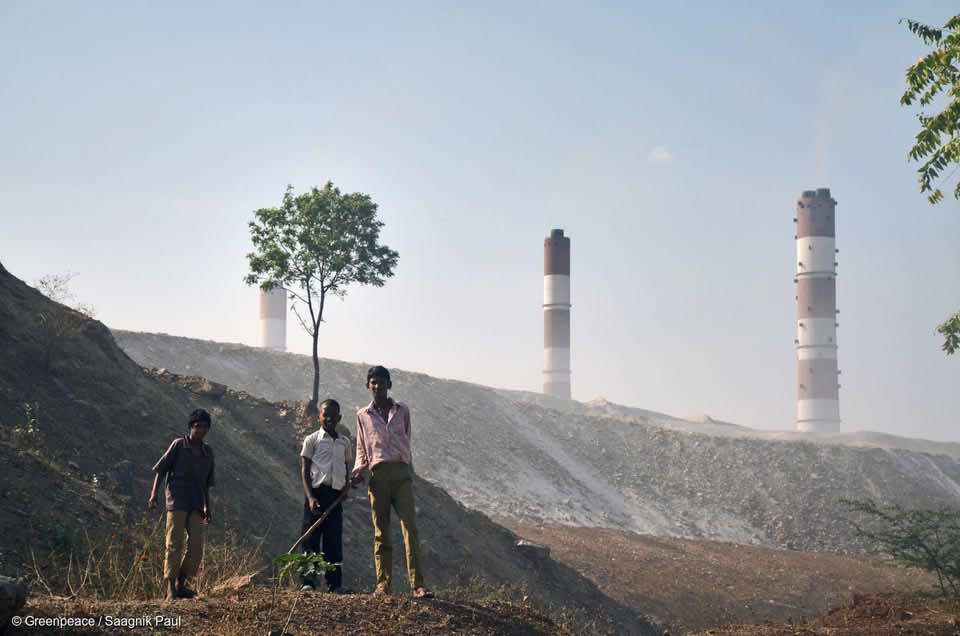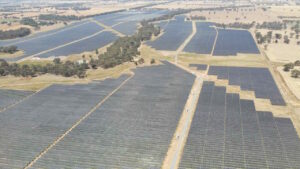Two of India’s leading public sector banks are at risk of losing a “significant proportion” of US$7.4 billion loaned over three years to private power producers for financially disastrous projects, according to a damning audit report released recently by India’s Comptroller and Auditor General (CAG).

The CAG audit of loans made by the Rural Electrification Corporation (REC) and the Power Finance Corporation (PFC) for the three years to March 2016 reveals a litany of basic errors the two banks made in funding projects which had little or no prospect of ever being viable.
Most of the projects which either defaulted on their loan payments or were deemed “non-performing” loans were for major coal projects.
The audit found the two agencies flouted both their internal policies and Reserve Bank of India guidelines for assessing the risks of projects. It also found they funded a raft of private power companies with either no experience at all in the power sector or no experience with the type and scale of plants they were proposing.
The projects, CAG stated, were “not assessed objectively” by the two banks. The CAG reports that by the end of the 2015-16 financial year the two banks had already classed US$1.84 billion as “non-performing” loans which the power producers had been in default on for over five months. At the same time private power producers were in default on a further US$1.9 billion in loans for over 30 days but less than five months.
Banks drink the coal boom Kool Aid
After India’s Electricity Act was amended in 2003 to allow private power generators into the market, a boom mentality ensued.
Power demand was growing rapidly and both public and private sector funding was readily available to well-connected developers who pitched ambitious power development projects.
As the coal power boom gathered pace, state governments fell over themselves to enter into agreements with project developers for massive new plants. Some were approved and built even though they had no coal allocation or even power purchase agreements.
In other instances, the availability of essential water supplies was in serious doubt due to poor catchment planning and over-allocation. Other companies made grand promises to landowners, investors and governments but delivered nothing but bad news.
Still others took shortcuts in the scramble to grasp a coal allocation from the central government, resulting in a series of corruption scandals.
In the midst of it all, state and private banks got caught up in the coal boom hype.
The REC, which had begun its life in 1969 supporting the agricultural sector with pumps for irrigation, was called on to provide financial assistance not just to public utilities but also to private companies with big coal dreams.
The PFC, which is a public company under the aegis of the Ministry of Power, was established in 1986 with – amongst other roles – carriage of the ‘Ultra Mega Power Projects’ program once seen as central to the rapid expansion of India’s generation capacity.
By 2013 there were ample red flags that should have alerted the REF and PFC to likely major problems with private power projects if they had cared to look. The CAG audit found that in many cases they didn’t.
In detailed audits of 12 loans entered into by the REC and PFC, the CAG was shocked to find that appropriate vetting of companies and their projects had not been undertaken. The promoters for these projects – which had a combined capacity of over 10,000 MW – did not have adequate experience in the power sector or in implementing infrastructure projects of similar scale.
The audit found none of these 12 projects which the banks backed were completed on schedule, further undermining their viability.
A big fish goes belly up
KSK Energy Ventures had proposed a 3600 MW coal plant in Chhattisgarh, one of India’s Ultra Mega Power Projects promoted by the national government and the Ministry of Power as a way of delivering 100,000 MW of new coal plant capacity by 2017.
The project, like most Indian coal projects, has a long and sorry history.
Land was initially bought from some poor farmers for a pittance. Others were treated more generously, fuelling landowners’ demands for more equitable treatment. In the ensuing protests, police beat up villagers, detaining some. Community resentment grew.
Even though KSK only had four small operating power plants with a combined capacity of 279 megawatts at the time, the company had formidable fundraising skill.
KSK, which had been founded by two finance professionals, succeeded in raising a total of US$2.9 billion in loans from a coalition of 27 banks and financial institutions. Two of the lenders enticed into the coalition of lenders were REC and PFC.
Crucial to assessing the commercial viability of the project was a detailed assessment of the cost of generation and the total tariff income from the power sold to the company’s customers.
In its project assessment, REC calculated the cost of generation as being 2.34 rupees per unit and the tariff the company would be paid as being 2.33 rupees per unit. In short, their assessment was that the project was a dud.
However, PFC – the lead lender for the project – came up with a far rosier estimate, putting the average tariff as yield being 15 per higher than the cost of generation.
The two banks preferred the more optimistic of the two costs and decided it was eligible for funding.
However, a condition of the original loan from the two banks was that the average tariff the company sold its power for should not be less than 2.7 rupees (four US cents) per kilowatt hour. Less than that and the viability of the project would be in question.
In its audit report the CAG argues that both banks got their initial calculations all wrong: in their view the real tariff for power sales should have been estimated as being just 2.05 rupees per unit, which was far lower than the actual cost of generation.
This, the audit report stated, indicated “the non-viability of the project.” In CAG’s view, the project was doomed to fail before a sod of soil had even been turned.
The loan agreement with REC for the project also specified that funds could only be disbursed if letters were submitted indicating the joint venture companies were willing to contribute equity. However, when the companies failed to supply the required letters, REC turned a blind eye and, from August 2011 on, provided US$304 million in funds anyway.
If all went according to plan, the coal-guzzling behemoth was supposed to be commissioned by New Year’s Day in 2011.
That didn’t happen.
Coal blocks allocated for the project were cancelled in June 2013 and the project was hit by a lack of labour. Protests against the plant by villagers also caused delays. As a result the cost of the project mounted.
Even so, the company commissioned the first 600 MW unit in August 2013 with another unit connected to the grid a year later. However, instead of relieving financial pressure on the company, the operation of the plants actually made things far worse.
With costs higher than income, huge financial losses the company were incurred just to keep the plant running.
As a result the cost of completing the whole project blew out, and the sponsors went back to the banks for more money, which was duly provided in early 2016. The additional funding didn’t solve KSK’s problems.
In May 2017, a source told Livemint, an Indian financial newsite, that the Mahandi plant was up for sale, with the private equity fund Bain Capital Credit and Piramal Enterprises reported to be in discussions to buy the stressed asset.
Now for the hangover
The CAG audit reveals many financial horror stories with many other projects too. (See also “The rise and fall of an Indian coal project.”)
Examination of some projects by the audit team revealed the banks failed to do basic due diligence on conflicts of interest where project promoters were also the principal contractors building the plants.
The banks also failed to do basic checks when companies finances soured. Even though some of the companies were losing money year after year or already in default with other banks, more funds were provided and good money was thrown after bad.
For all the problems the audit report revealed, neither bank appears to have learnt from its mistakes.
After the audit report was released, REC issued a statement to the national stock exchange insisting it has a “sound credit appraisal system” and a well-established system for ensuring due diligence of loan proposals. PFC seems to have learnt little either, claiming that criticisms of it by CAG were “purely speculative in nature.”
The banks’ blind commitment to big coal projects has come at a terrible financial cost for the Indian public. It has also been devastating for the communities that were uprooted or disrupted by projects which were never viable.
The saga continues. With so much money sunk in projects, new government policies are being canvassed to placate the demands of the stressed private power producers and, in part, to limit the potentially huge losses the publicly-owned banks are exposed to because of their own fatally flawed decisions.
Bob Burton is the Editor of CoalWire, a weekly bulletin on global coal industry developments. (You can sign up for it here.)










